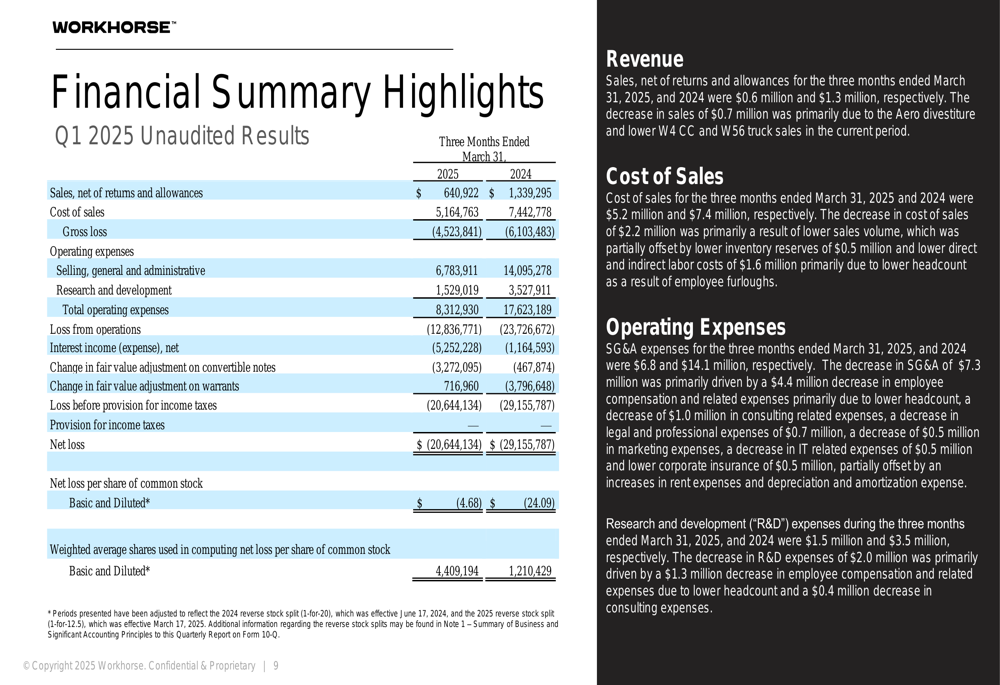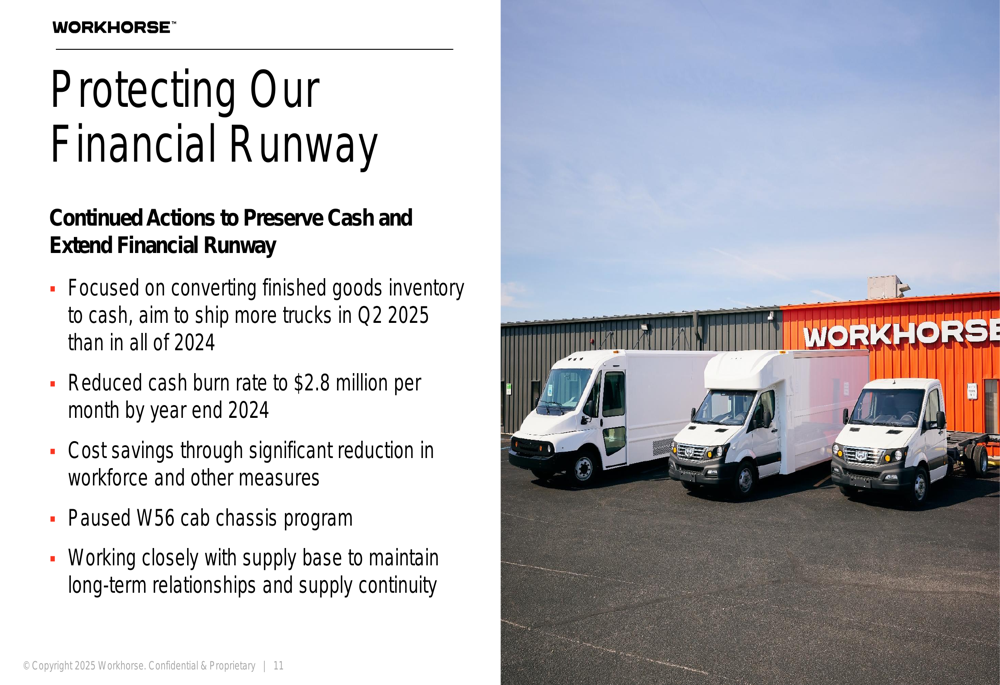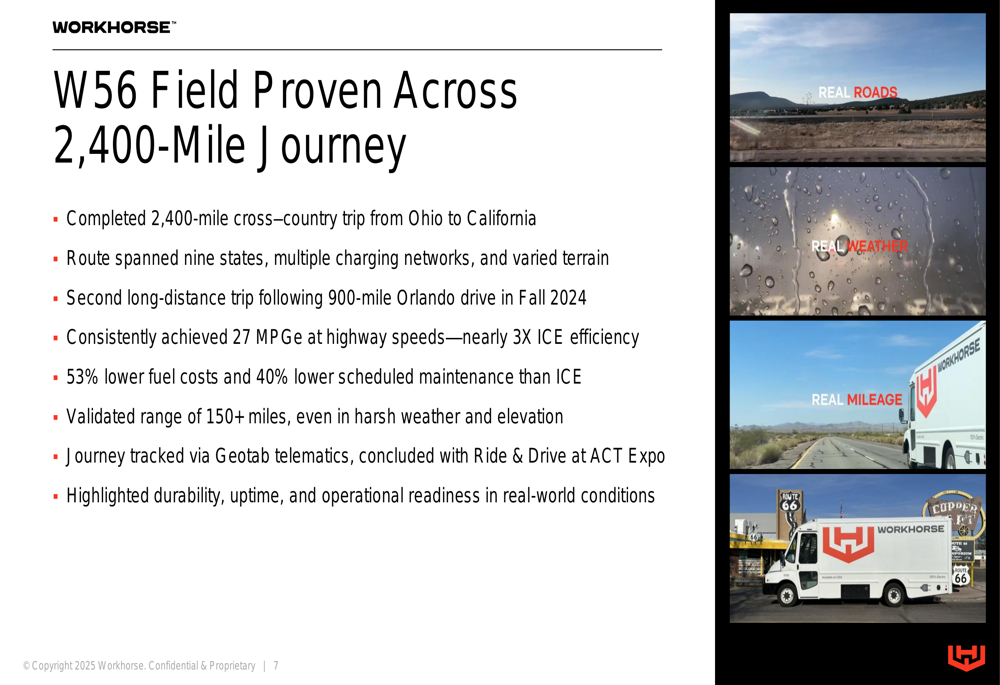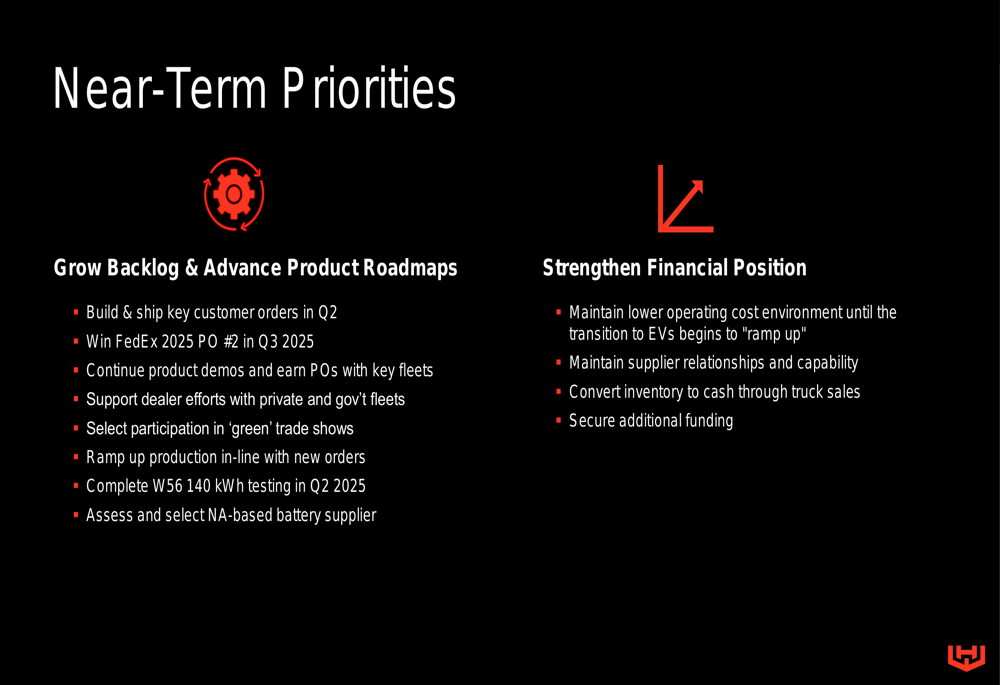Procore signs multi-year strategic collaboration agreement with AWS
Workhorse Group Inc. (NASDAQ:WKHS) reported first-quarter 2025 financial results on May 15, showing continued revenue challenges but improved bottom-line performance as aggressive cost-cutting measures take effect. The commercial electric vehicle manufacturer’s stock traded down 3.55% in pre-market to $0.96, reflecting ongoing investor concerns about the pace of EV adoption in the commercial sector.
Quarterly Performance Highlights
Workhorse reported Q1 2025 sales of $640,922, down from $1,339,295 in the same period last year, representing a 52% year-over-year decline. Despite the revenue drop, the company managed to narrow its losses through significant cost reductions.
As shown in the following financial summary:

The company’s gross loss improved to $(4,523,841) from $(6,103,483) in Q1 2024. More notably, Workhorse slashed its operating expenses by more than 50%, with selling, general and administrative expenses falling to $6,783,911 from $14,095,278 year-over-year. Research and development costs were also reduced by 57% to $1,529,019.
These cost-cutting measures helped Workhorse reduce its net loss to $(20,644,134) from $(29,155,787) in the prior-year period, representing a 29% improvement.
The balance sheet showed $30.6 million in cash and cash equivalents as of March 31, 2025, a significant improvement from the $4.6 million reported at the end of 2024. This cash infusion appears to be the result of financing accessed under a March 2024 agreement.

Strategic Initiatives
Workhorse emphasized its focus on cash preservation and extending its financial runway amid challenging market conditions. The company aims to reduce its monthly cash burn rate to $2.8 million by year-end 2024 through workforce reductions and other cost-saving measures.
"We’re focusing on converting finished goods inventory to cash, with the goal of shipping more trucks in Q2 2025 than in all of 2024," the company stated in its presentation. Workhorse has also paused its W56 cab chassis program as part of its cash preservation strategy.

Despite financial challenges, Workhorse highlighted growing momentum for its W56 platform, which completed a 2,400-mile cross-country journey from Ohio to California. The company reported that the vehicle achieved 27 MPGe at highway speeds, which it claims is nearly three times the efficiency of internal combustion engine (ICE) vehicles, with 53% lower fuel costs and 40% lower scheduled maintenance.
As illustrated in this slide detailing the cross-country journey performance:

The company reported initial W56 orders, including purchase orders for 27 W56 step vans and deliveries of fully-upfitted W56 vans to FedEx (NYSE:FDX). Workhorse also noted that it’s the only North American OEM producing complete step vans in-house, with six Class 4-6 EV models in production and four additional variants in development.
Forward-Looking Statements
Looking ahead, Workhorse outlined several near-term priorities focused on growing its order backlog and strengthening its financial position. The company aims to build and ship key customer orders in Q2, win a second FedEx purchase order in Q3 2025, and continue product demonstrations to secure purchase orders from key fleets.

The company also plans to complete testing of its W56 140 kWh reduced range model in Q2 2025 and assess potential North American-based battery suppliers.
These priorities come amid continued challenges in the commercial EV market. Workhorse’s previous earnings report for Q4 2024 highlighted slower-than-expected adoption of commercial EVs, regulatory challenges, and infrastructure limitations as significant hurdles.
With its stock price down 98.6% from its 52-week high of $68.08, Workhorse faces an uphill battle to convince investors of its long-term viability in the competitive electric commercial vehicle market. The company’s focus on cost discipline and cash preservation appears to be a necessary strategy as it navigates the slow transition to electric vehicles in the commercial sector.
Full presentation:
This article was generated with the support of AI and reviewed by an editor. For more information see our T&C.
